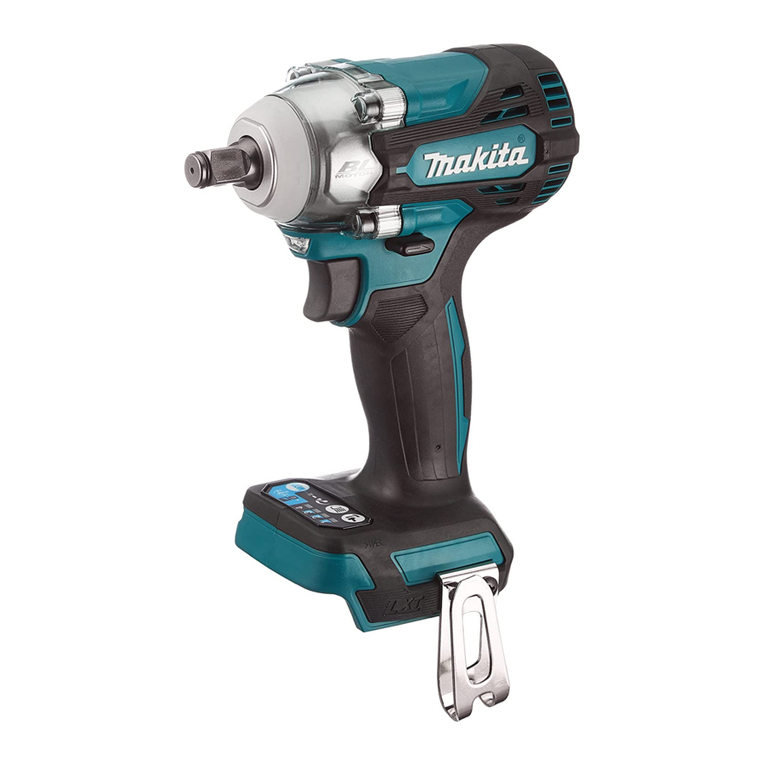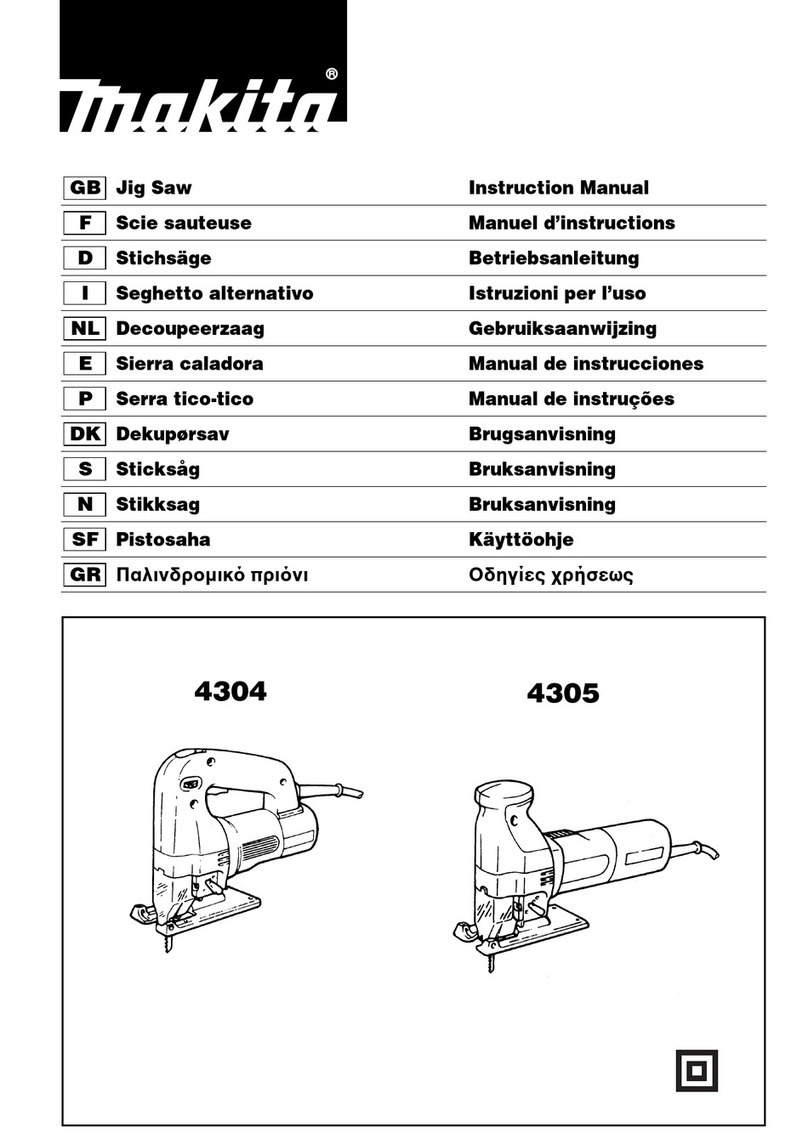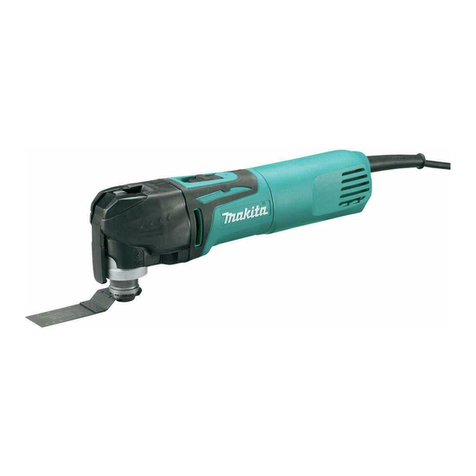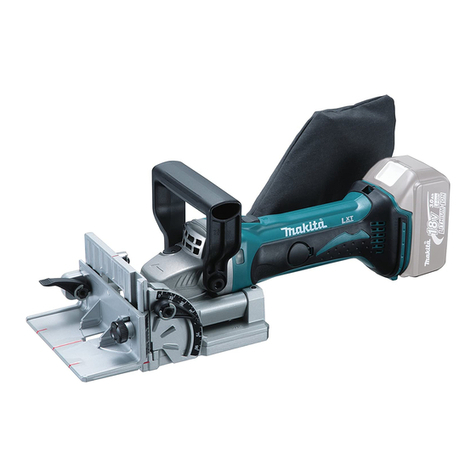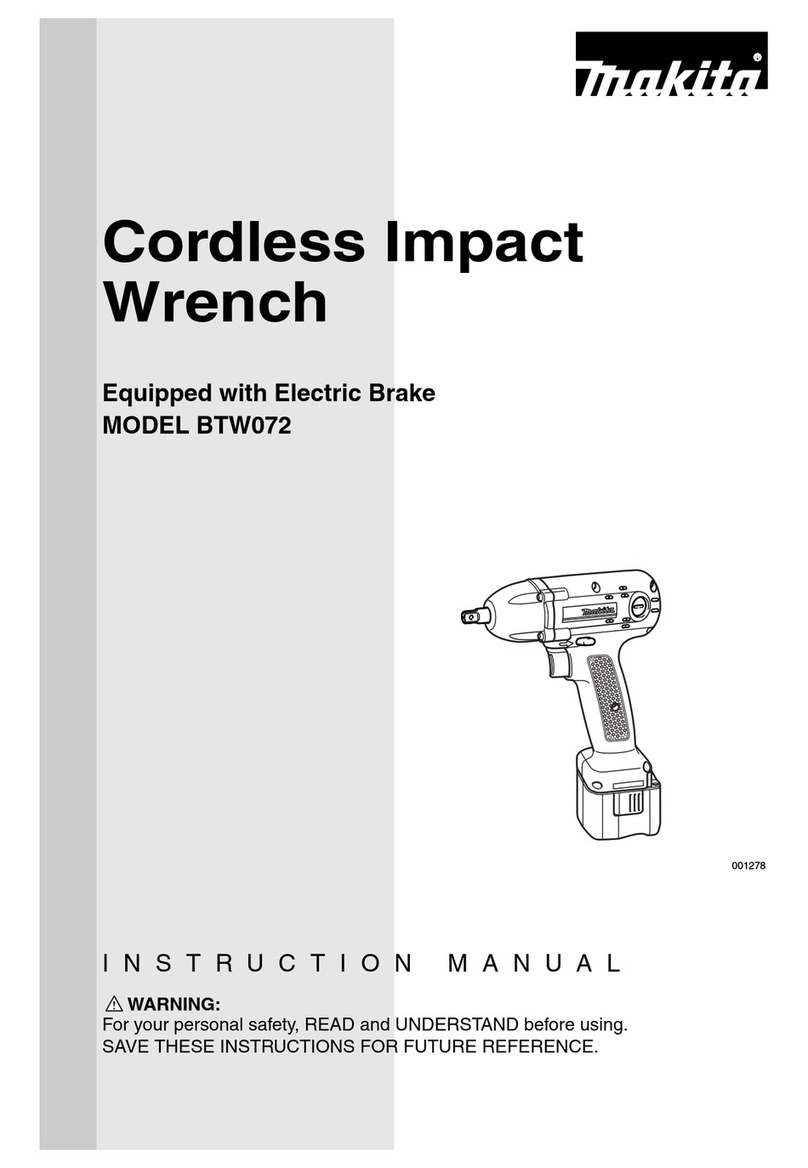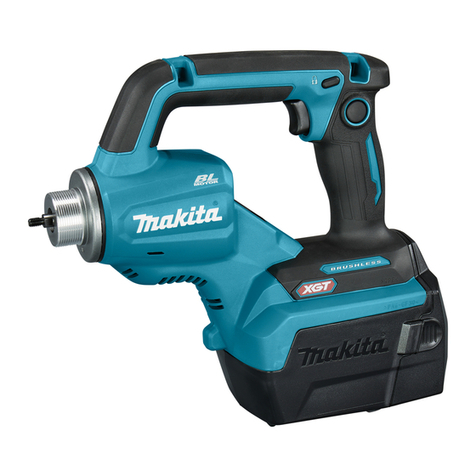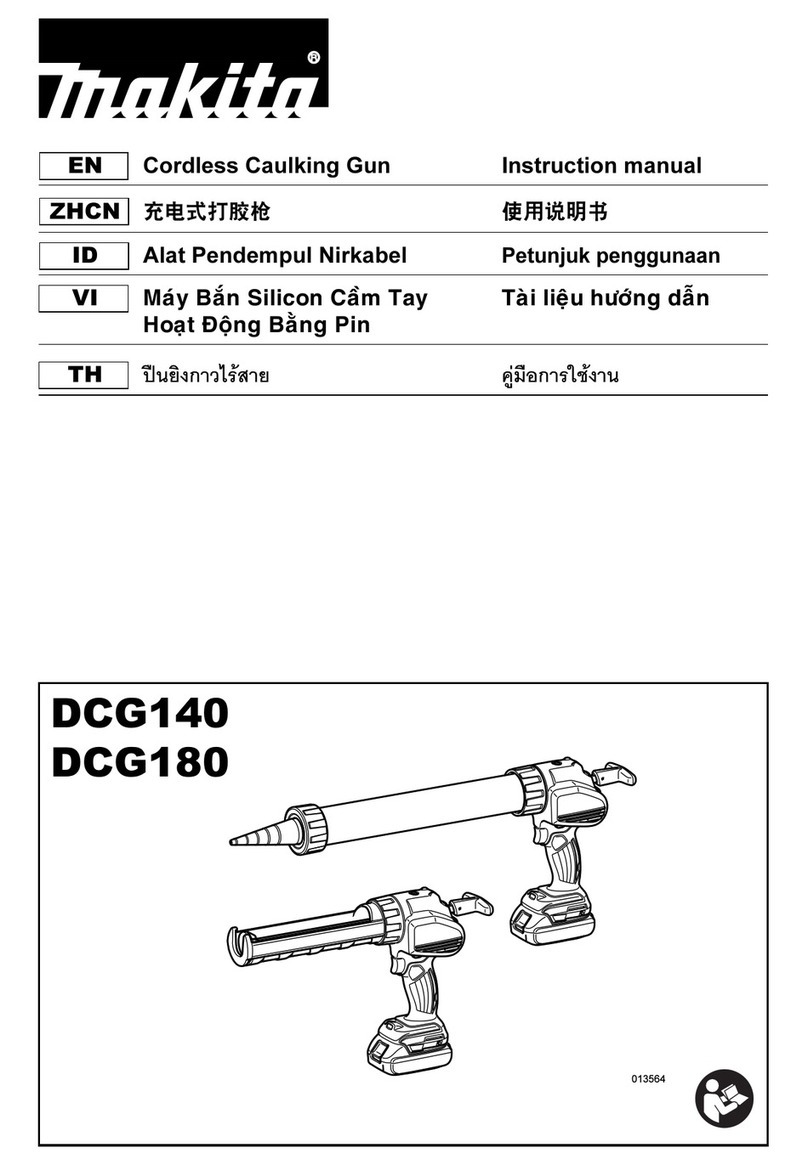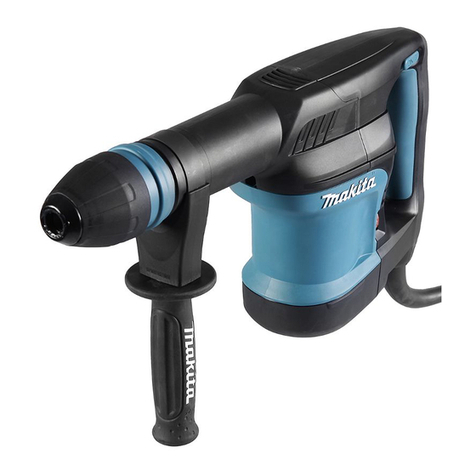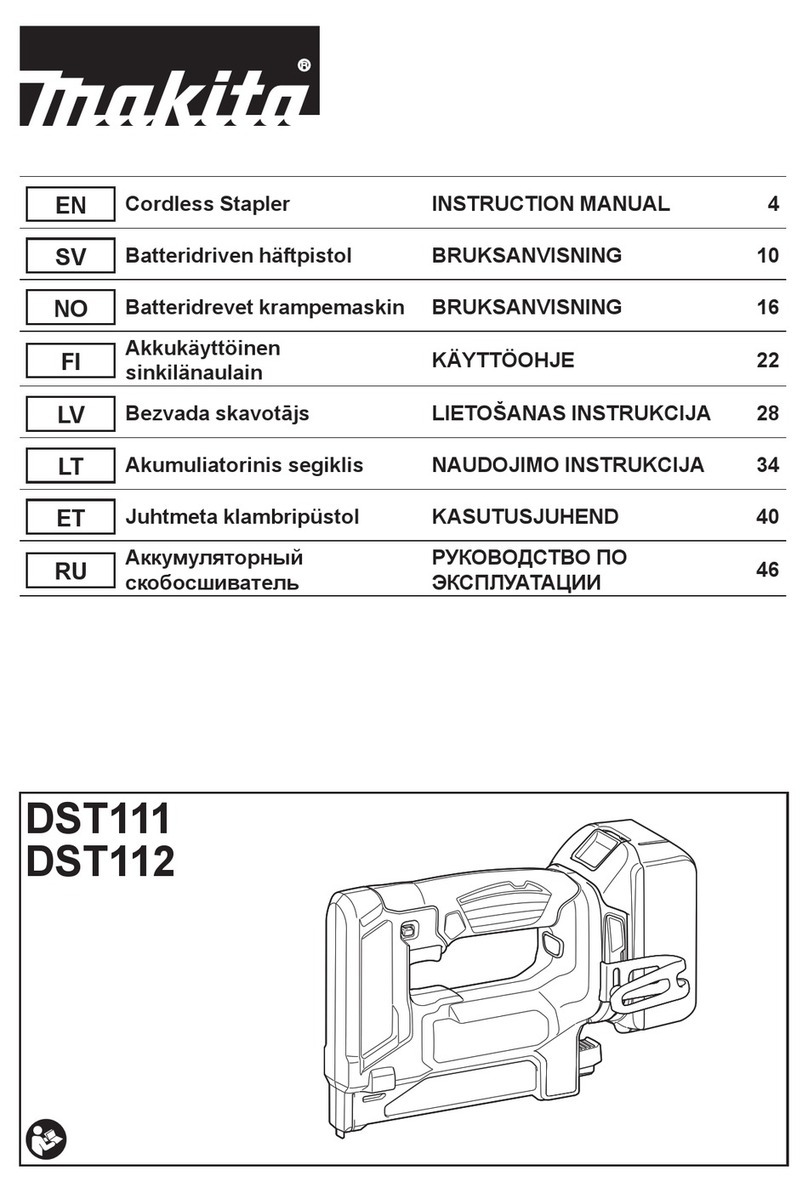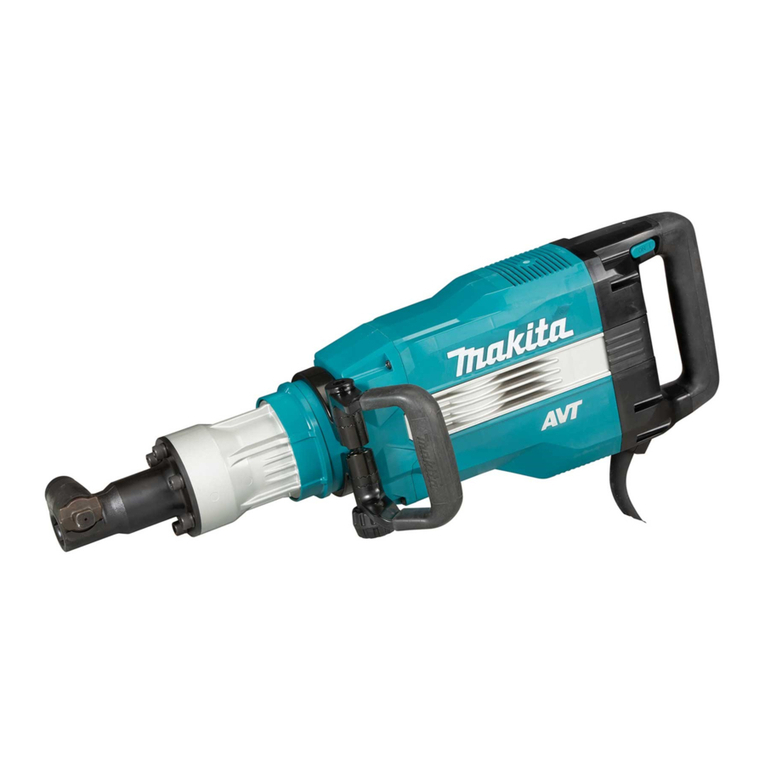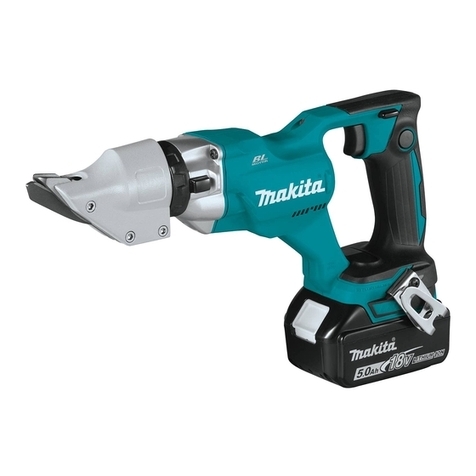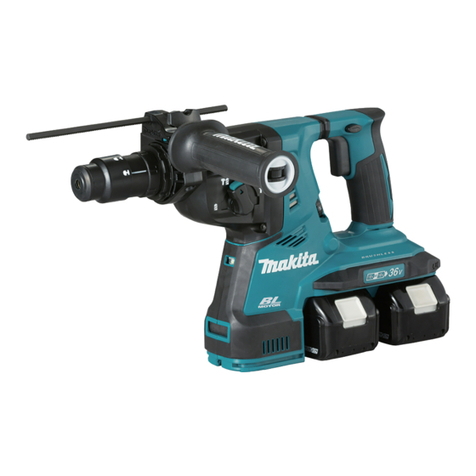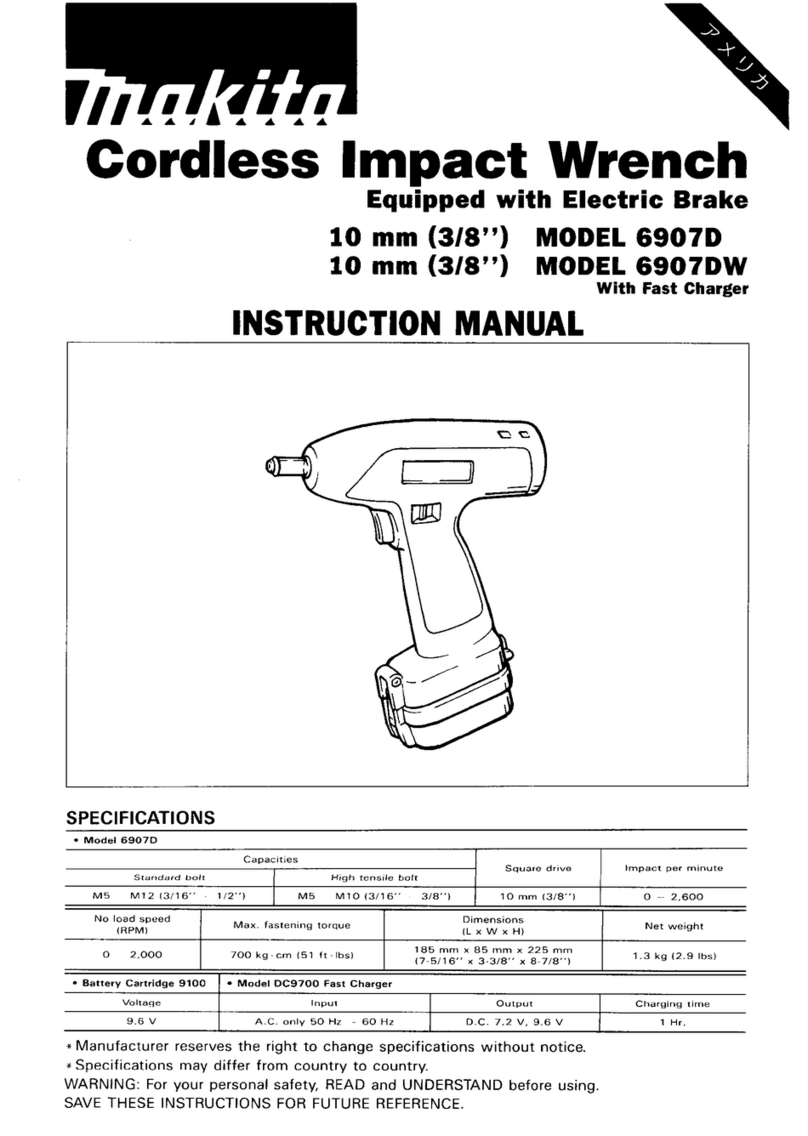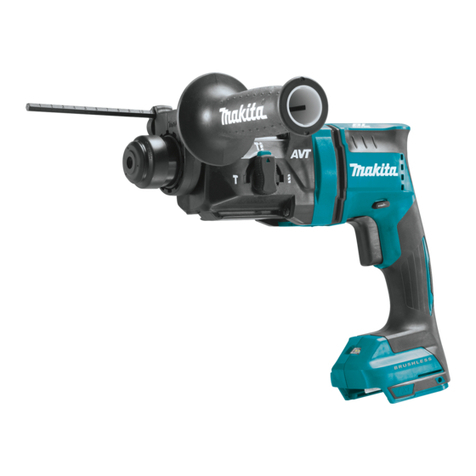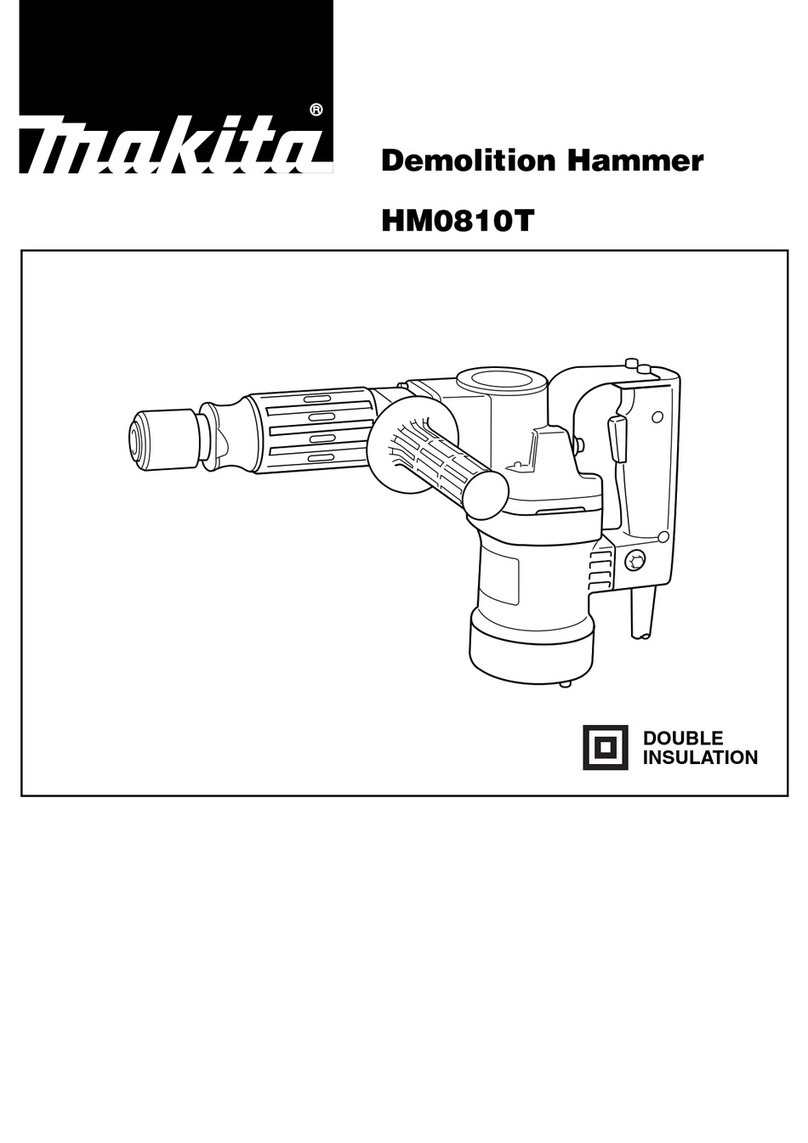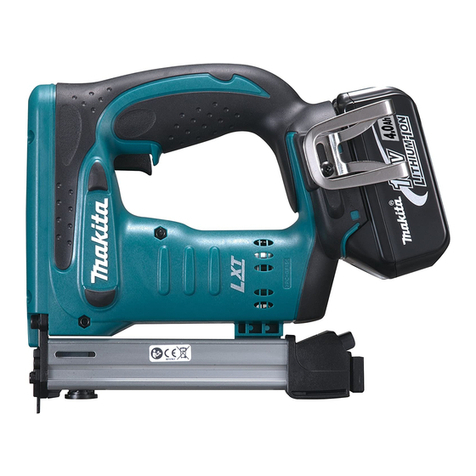
10 ENGLISH
Service
1. Have your power tool serviced by a qualied
repair person using only identical replacement
parts.Thiswillensurethatthesafetyofthepower
tool is maintained.
2. Never service damaged battery packs. Service
ofbatterypacksshouldonlybeperformedbythe
manufacturer or authorized service providers.
3. Follow instruction for lubricating and chang-
ing accessories.
Safety instructions for Cordless
Hole Puncher
1. Proper selection of the punch and the die is
essential. Select the correct punch and die
according to the hole shape, size of hole,
workpiece thickness and material type.
2. Ensure that any punch with stepped edge,
which prevents free rotation, is installed cor-
rectly in the punch piston before tightening the
punch retaining nut.
3. For punching channel-shaped workpiece and
the workpiece made of stainless steel, use the
die provided exclusively for these materials.
Only select the combination of the punch
and die that is suitable for the workpiece
thickness.
4. Ensure the punch and the die are rmly xed
in position with the nut or the bolt. Failure to
dosomaycauseseriousdamagetoyourtool
andseriouspersonalinjury.Regularlycheckand
tighten the punch and die.
5. The tool is electro-hydraulic. When the tem-
perature is cold, it should be run for a few
minutes at idle before starting operations.
6. Keep face, hands and other parts of your body
away from the punching area during operation.
7. Remove the battery cartridge before changing
the punch and the die or when servicing or
making adjustments.
8. The punch and the die that become worn,
deformed, nicked, broken or damaged in any
way may cause a tool breakdown and a seri-
ous accident. Replace them immediately with
new ones supplied from Makita.
9. When punching stainless steel, the punch
and die may wear earlier than punching softer
materials. Ensure that the punch and die are
in good condition, free from wear and are not
deformed, nicked, broken or damaged in any
way. Check with your dealer before punching
any material not listed in the specications.
10. Remove and check the carbon brushes reg-
ularly. Replace them after 200 times of use.
Carbon brushes with a length of about 6 mm or
lessmaycausedamagetothemotor.
11. When using the tool continuously, its tempera-
ture can exceed 70 °C which may cause lower
performance. In this case, stop operating for
about 1 hour to allow the tool to cool down
before using it again.
12. Do not cover or clog the motor air vents as this
may cause the motor to overheat, resulting in
smoke, re and explosion.
Important safety instructions for
battery cartridge
1.
Before using battery cartridge, read all instruc-
tions and cautionary markings on (1) battery char-
ger, (2) battery, and (3) product using battery.
2.
Do not disassemble or tamper the battery cartridge.
Itmayresultinare,excessiveheat,orexplosion.
3. If operating time has become excessively
shorter, stop operating immediately. It may
result in a risk of overheating, possible burns
and even an explosion.
4.
If electrolyte gets into your eyes, rinse them out
with clear water and seek medical attention right
away. It may result in loss of your eyesight.
5. Do not short the battery cartridge:
(1) Do not touch the terminals with any con-
ductive material.
(2) Avoid storing battery cartridge in a con-
tainer with other metal objects such as
nails, coins, etc.
(3) Do not expose battery cartridge to water
or rain.
A battery short can cause a large current ow,
overheating, possible burns and even a breakdown.
6. Do not store and use the tool and battery car-
tridge in locations where the temperature may
reach or exceed 50 °C (122 °F).
7. Do not incinerate the battery cartridge even if
it is severely damaged or is completely worn
out. The battery cartridge can explode in a re.
8. Do not nail, cut, crush, throw, drop the battery
cartridge, or hit against a hard object to the
battery cartridge.Suchconductmayresultina
re,excessiveheat,orexplosion.
9. Do not use a damaged battery.
10.
The contained lithium-ion batteries are subject to
the Dangerous Goods Legislation requirements.
Forcommercialtransportse.g.bythirdparties,
forwarding agents, special requirement on pack-
aging and labeling must be observed.
For preparation of the item being shipped, consulting an
expertforhazardousmaterialisrequired.Pleasealso
observepossiblymoredetailednationalregulations.
Tapeormaskoopencontactsandpackupthe
batteryinsuchamannerthatitcannotmove
around in the packaging.
11. When disposing the battery cartridge, remove
it from the tool and dispose of it in a safe
place. Follow your local regulations relating to
disposal of battery.
12. Use the batteries only with the products
specied by Makita. Installing the batteries to
non-compliantproductsmayresultinare,exces-
siveheat,explosion,orleakofelectrolyte.
13. If the tool is not used for a long period of time,
the battery must be removed from the tool.
14. During and after use, the battery cartridge may
take on heat which can cause burns or low
temperature burns. Pay attention to the han-
dling of hot battery cartridges.
15. Do not touch the terminal of the tool imme-
diately after use as it may get hot enough to
cause burns.
